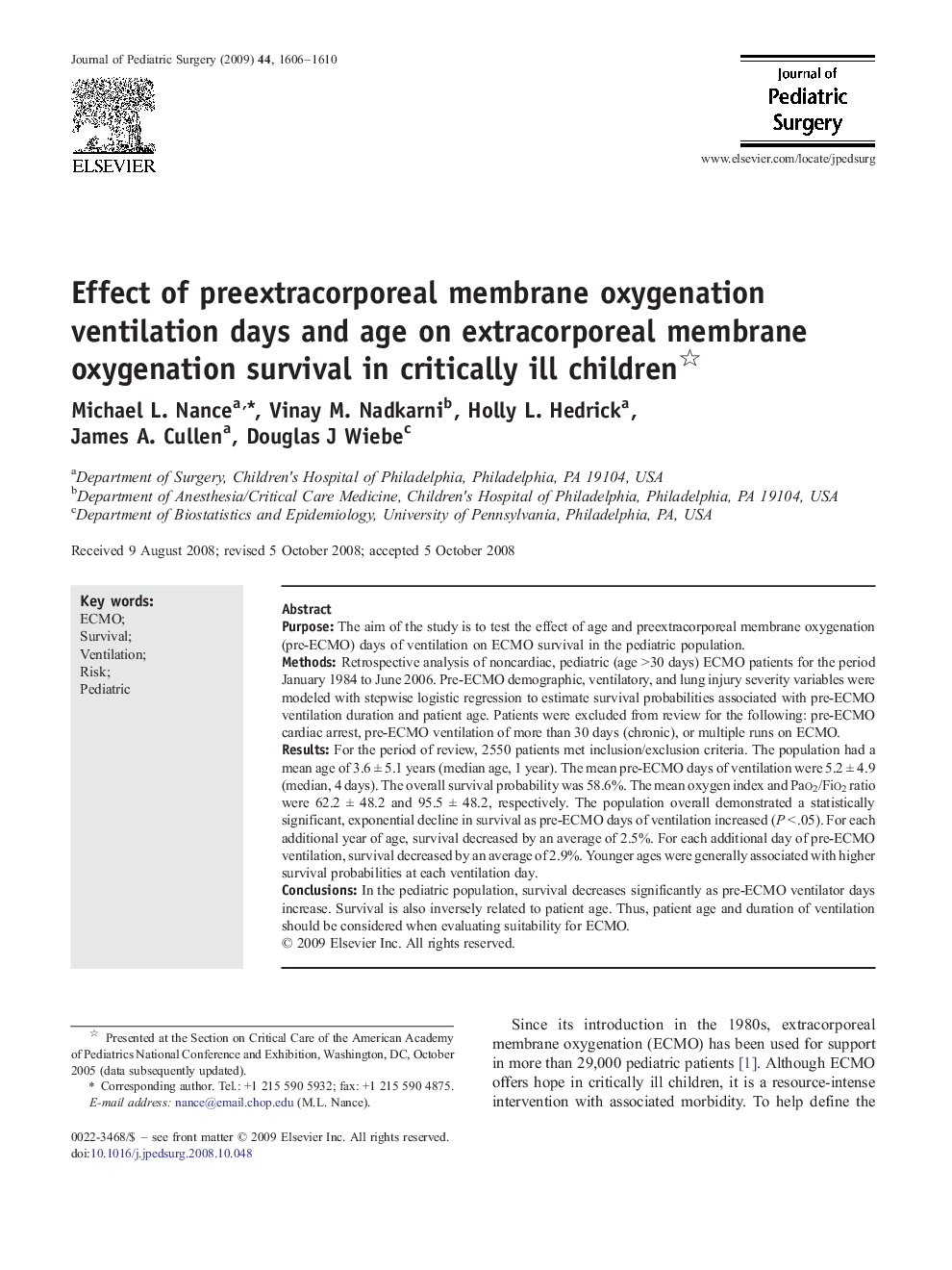| Article ID | Journal | Published Year | Pages | File Type |
|---|---|---|---|---|
| 4158199 | Journal of Pediatric Surgery | 2009 | 5 Pages |
PurposeThe aim of the study is to test the effect of age and preextracorporeal membrane oxygenation (pre-ECMO) days of ventilation on ECMO survival in the pediatric population.MethodsRetrospective analysis of noncardiac, pediatric (age >30 days) ECMO patients for the period January 1984 to June 2006. Pre-ECMO demographic, ventilatory, and lung injury severity variables were modeled with stepwise logistic regression to estimate survival probabilities associated with pre-ECMO ventilation duration and patient age. Patients were excluded from review for the following: pre-ECMO cardiac arrest, pre-ECMO ventilation of more than 30 days (chronic), or multiple runs on ECMO.ResultsFor the period of review, 2550 patients met inclusion/exclusion criteria. The population had a mean age of 3.6 ± 5.1 years (median age, 1 year). The mean pre-ECMO days of ventilation were 5.2 ± 4.9 (median, 4 days). The overall survival probability was 58.6%. The mean oxygen index and Pao2/Fio2 ratio were 62.2 ± 48.2 and 95.5 ± 48.2, respectively. The population overall demonstrated a statistically significant, exponential decline in survival as pre-ECMO days of ventilation increased (P < .05). For each additional year of age, survival decreased by an average of 2.5%. For each additional day of pre-ECMO ventilation, survival decreased by an average of 2.9%. Younger ages were generally associated with higher survival probabilities at each ventilation day.ConclusionsIn the pediatric population, survival decreases significantly as pre-ECMO ventilator days increase. Survival is also inversely related to patient age. Thus, patient age and duration of ventilation should be considered when evaluating suitability for ECMO.
